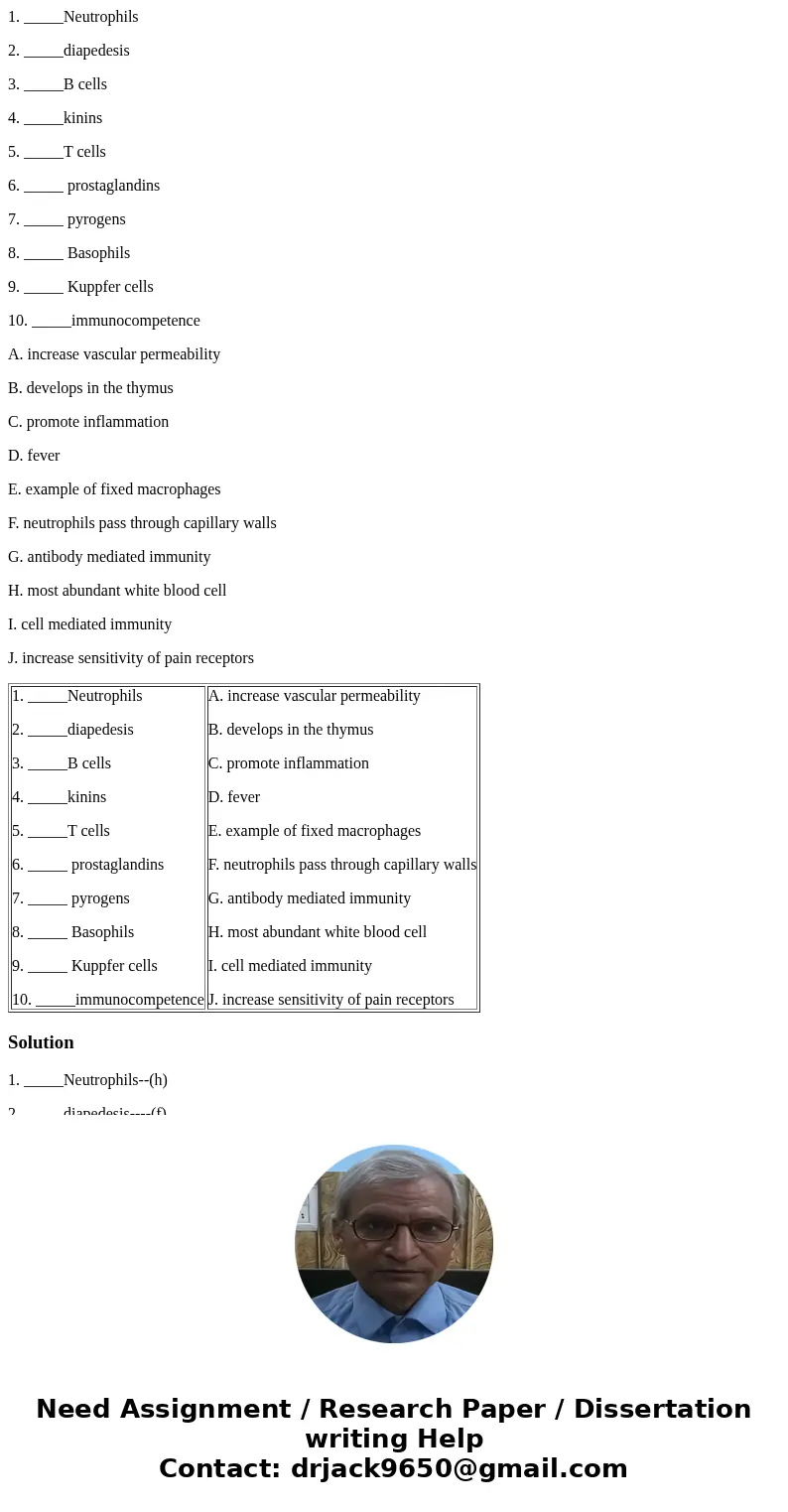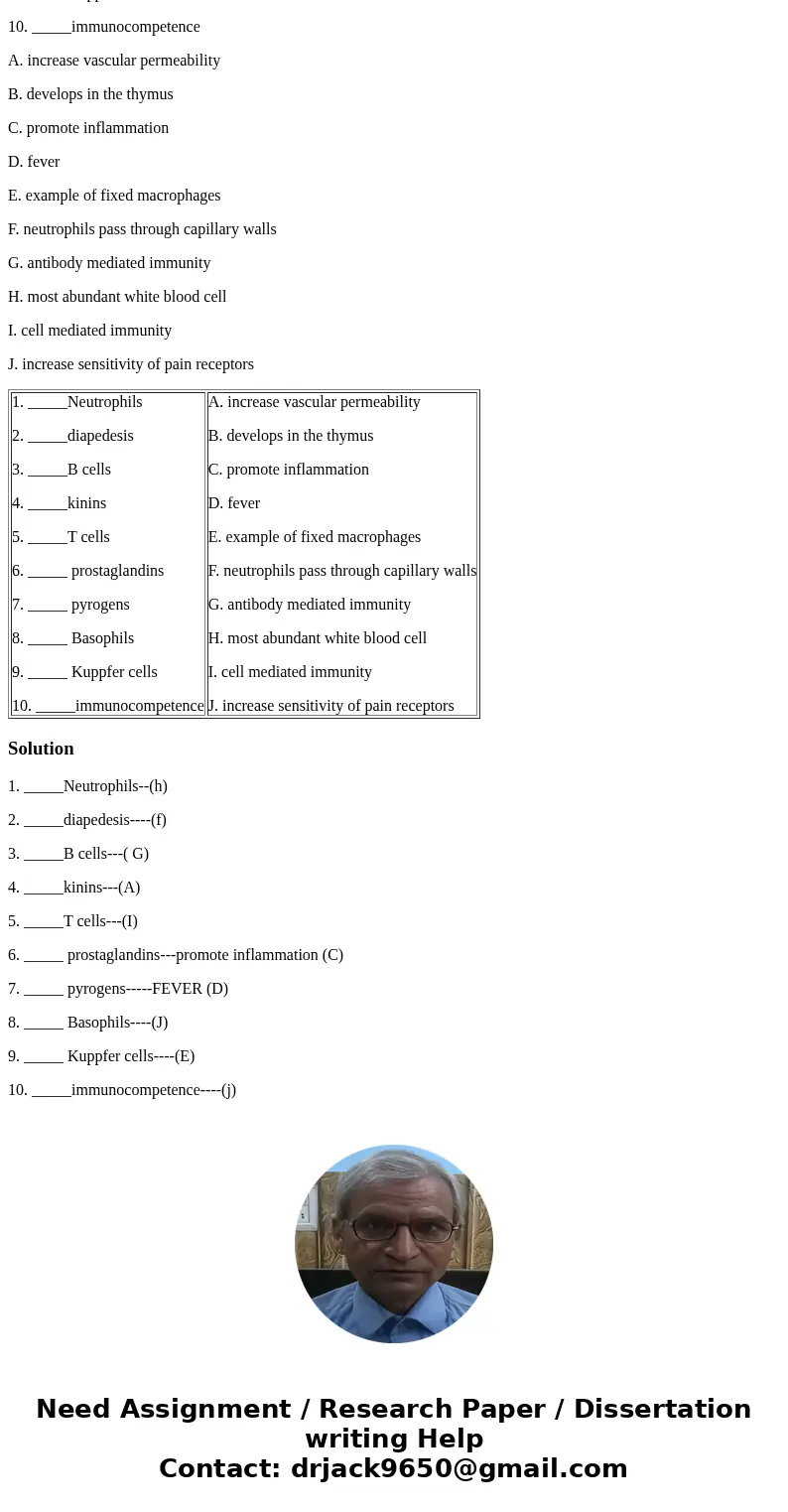1 Neutrophils 2 diapedesis 3 B cells 4 kinins 5 T cells 6 p
1. _____Neutrophils
2. _____diapedesis
3. _____B cells
4. _____kinins
5. _____T cells
6. _____ prostaglandins
7. _____ pyrogens
8. _____ Basophils
9. _____ Kuppfer cells
10. _____immunocompetence
A. increase vascular permeability
B. develops in the thymus
C. promote inflammation
D. fever
E. example of fixed macrophages
F. neutrophils pass through capillary walls
G. antibody mediated immunity
H. most abundant white blood cell
I. cell mediated immunity
J. increase sensitivity of pain receptors
| 1. _____Neutrophils 2. _____diapedesis 3. _____B cells 4. _____kinins 5. _____T cells 6. _____ prostaglandins 7. _____ pyrogens 8. _____ Basophils 9. _____ Kuppfer cells 10. _____immunocompetence | A. increase vascular permeability B. develops in the thymus C. promote inflammation D. fever E. example of fixed macrophages F. neutrophils pass through capillary walls G. antibody mediated immunity H. most abundant white blood cell I. cell mediated immunity J. increase sensitivity of pain receptors |
Solution
1. _____Neutrophils--(h)
2. _____diapedesis----(f)
3. _____B cells---( G)
4. _____kinins---(A)
5. _____T cells---(I)
6. _____ prostaglandins---promote inflammation (C)
7. _____ pyrogens-----FEVER (D)
8. _____ Basophils----(J)
9. _____ Kuppfer cells----(E)
10. _____immunocompetence----(j)


 Homework Sourse
Homework Sourse